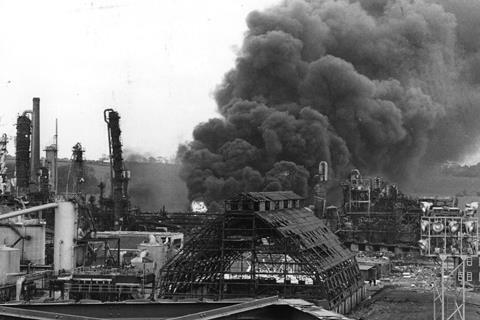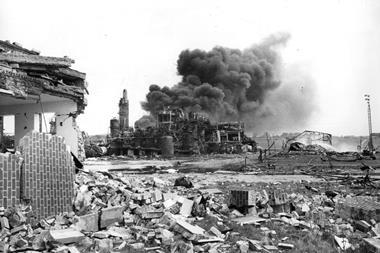In the last 50 years, attitudes to safety have improved so that first-hand experience of lab incidents is now rare

There is no substitute for experience in the laboratory. You can’t really be taught it in a classroom, it must be built up over time as you pass from novice to practitioner before becoming an expert. This poses something of a dilemma for those of us who work in chemistry safety – we would like our colleagues to be experts in safety and yet we don’t ever want them to experience truly being unsafe.
As we mark 50 years on from the Flixborough disaster in which 28 people were killed and 36 seriously injured in a chemical plant explosion, it feels like an appropriate time to reflect on the current state of safety in the workplace for chemists and other laboratory professionals. Five decades passing has seen unimaginable changes in how we work in the laboratory and industry, and yet the core concept of a chemist persists.
There is no definitive set of data for laboratory incidents, but the general data published by the Health and Safety Executive paints a generally positive picture. Certainly lab work is never used as an example of a high risk activity, (the top two being building and farming, if you were wondering). Even if you are connected to the safety community where we actively seek out news of incidents (to learn from them and improve our own practice, not out of a sense of morbid fascination), it is still hard to get enough data to analyse. Even the best case study represents an isolated data point with perhaps a dozen incidents of note a year, most of which are near misses. Of course, the lack of evidence in many ways is a good thing.
Anecdotally, things seem pretty good. I have visited hundreds of laboratories over the last few years and have rarely seen unsafe practices. Sure, there was the odd minor infraction – sloppy labelling, incorrect PPE, untidy workspaces – but never anything that made me feel unsafe. The advice I give is more often about continual improvement, or minor points of process relating to paperwork. When someone comes to me for specific advice this is often a sign that they are already working safely and want to be even better!
Remaining risks
It should be said that even the most smug health and safety advisor would not take the credit for this improvement. Science, and chemistry in particular, seems to have got a lot safer. There is an argument that the type of work we do has changed over the last 50 years, particularly with the rise of green chemistry. At a certain level this is true and yet old horrors still surface. Want to preserve a delicate sample of brain tissue? Better reach for the picric acid. Need to get your nanostructured surface really clean? Piranha solution it is!
Even when we have successfully substituted a less hazardous solvent, all that has actually happened is the hazard has been pushed up the supply chain; most toluene starts as benzene after all. To use safety terminology, the hazard or potential to cause harm has remained significant but the likelihood of the hazard being realised, often referred to as risk, has reduced over time.
Dangerous incidents are now so rare that very few people have experienced them first hand
So what has changed? Safety equipment has got better and we have a better understanding of hazard than we did before. That said, the first sash fume cupboard was installed in 1923 and lab coats became the norm in the previous century. The attitude of Justus von Liebig that ‘If you want to become a chemist, you have to ruin your health,’ has thankfully also been left in the 19th century. What has really changed is the attitude of the people doing the science. We no longer expect to risk our health simply to practice our profession, nor do we expect others to do so for us.
Thanks to systematic reform and the hard work of generations of professionals dangerous incidents are now so rare that very few people have experienced them first hand. Most chemists will have heard of someone who has been affected, but even then it is often near misses and horror stories, which I for one am certainly guilty of spreading. These changes, which have gradually happened over the last five decades, have culminated in a somewhat unexpected problem. When your entire workforce has never worked in a really dangerous environment are they able to accurately judge risk for themselves?
This is a good problem to have and one that I deal with myself regularly. It sometimes manifests as overreaction to less hazardous chemicals or an underappreciation of the inherent danger posed by some common reagents. Despite these frustrations, I am glad that first-hand experience of serious incidents is now becoming a distant memory for the vast majority of chemists.












No comments yet